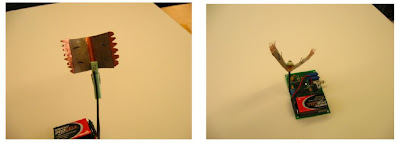Mohsen Shahinpoor is an expert and a professor of mechanical engineering at the University of Maine. He developed a robotic version of the notorious bug consuming Venus Flytrap, employing various materials he manufactured - ionic polymeric metal composite - a nanomaterial that can be exploited to imitate the way muscles work. He applies this fabric to animate the detection and closure abilities of the Venus Flytrap.
In order to create this robot, Shahinpoor designed two “leaves” that imitate the mouth-like appearing of the Flytrap. After this step, he mechanical engineered a backbone from a roll of copper. And so, trying to re-create the small fuzzes on the Flytrap that operate as the detectors, he summed minuscule strips of the ionic polymeric metal composite. The rest of the project was engineered as a typical electrical relay and electric potential generation arrangement.
At first sight, this mechanical engineered project could not look like much. But if we think about it, it's clear that the robotic Venus Flytrap is in reality a presentation of a new form of technology that could contribute to improvements in medical applications.
An elaborated application based on this
mechanical engineering program could be the basics of future human muscle replacements. Also, this project could lead to medical developments in sensory applications. A good case could be reestablishing facial manifestations to patients who lose this ability after a stroke.

 11:23 PM
11:23 PM
 maestr0
maestr0






























